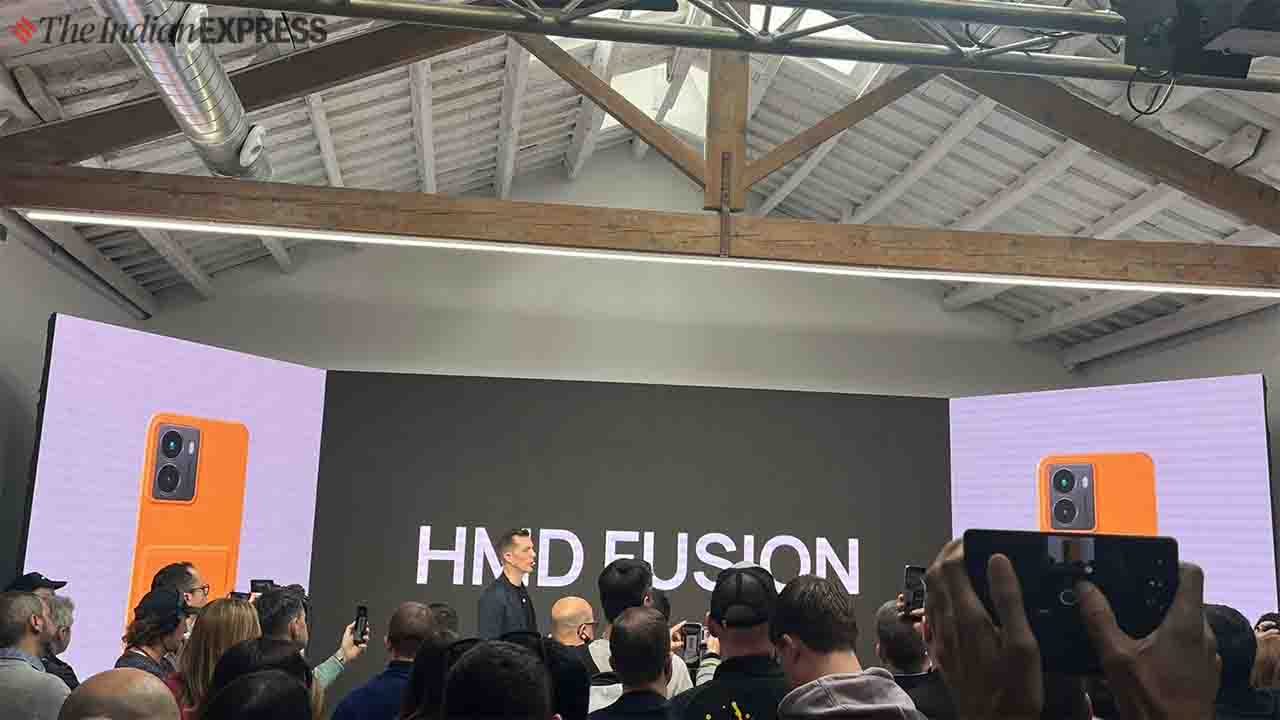HMD Global, the Finnish telecommunications company, is set to revolutionize the smartphone industry with its innovative approach to customization. Unveiled at the Mobile World Congress in Barcelona, the company’s latest venture, Fusion, aims to provide users with a unique and utilitarian smartphone experience. In an interview with Adam Ferguson, HMD’s global head of insight, proposition, and product marketing, the company’s strategy for making smartphones more customizable and versatile was outlined.
The Fusion concept diverges from the conventional smartphone design, offering users the opportunity to select and integrate modular components, referred to as “outfits.” These outfits can range from a barcode scanner and payment terminal to medical equipment or an extended battery. The objective is to extend the smartphone’s utility beyond its traditional functions and address real-world problems that users may encounter.
Ferguson emphasizes that Fusion goes beyond mere changes in case colors and materials. The platform enables users to attach outfits, incorporating additional functionalities beyond the standard hardware of the phone. The innovation relies on an array of six pogo pins on the back of the device, allowing easy attachment of accessories. By fostering a community approach, HMD Global aims to encourage not only developers but also hobbyists, educators, and professionals to contribute and build outfits for the Fusion device.
The term “modular” is eschewed in favor of the term “outfits” to describe the hardware accessories that users can attach to the Fusion smartphone. The goal is to encourage creativity and diverse applications, as Ferguson envisions users tailoring their smartphones to their specific needs. Whether for gaming, medical purposes, or other professional uses, Fusion’s potential is limited only by the user’s imagination.
HMD Global plans to release the first smartphone as part of the Fusion platform in July. While the specifications and price remain undisclosed, Ferguson assures that the outfits will be sold separately, ensuring that they do not contribute to an increase in the smartphone’s base cost. The company has also taken steps to simplify the process of creating and programming outfits, intending to make it accessible to a broad audience.
The Fusion initiative includes the release of a developer toolkit online, providing users with digital files and insights into software integrations. This step aims to facilitate a DIY approach, allowing individuals to understand and contribute to the platform’s growth. Ferguson emphasizes the simplicity of the interface, stating that coding software integrations and handling hardware pieces can be achieved with basic coding knowledge and access to a 3D printer, thanks to the specifications provided by HMD.
While modular smartphones have been attempted by major players like Google, LG, and Motorola with varying degrees of success, Ferguson remains optimistic about HMD’s approach. He acknowledges the challenges faced by previous attempts and underscores Fusion’s simplicity and ease of use compared to its predecessors.
In a market where smartphone makers are actively exploring innovative concepts to rejuvenate the industry, HMD Global stands out with its Fusion platform. The company, renowned for reintroducing Nokia-branded smartphones, is taking a unique path by focusing on easily repairable devices. Anticipating that half of its globally launched devices in the upcoming year will be repairable, HMD Global continues to push the boundaries of smartphone customization and functionality with Fusion. If successful, Fusion could mark a significant milestone in offering users a truly personalized and versatile smartphone experience, potentially redefining the industry’s landscape.








